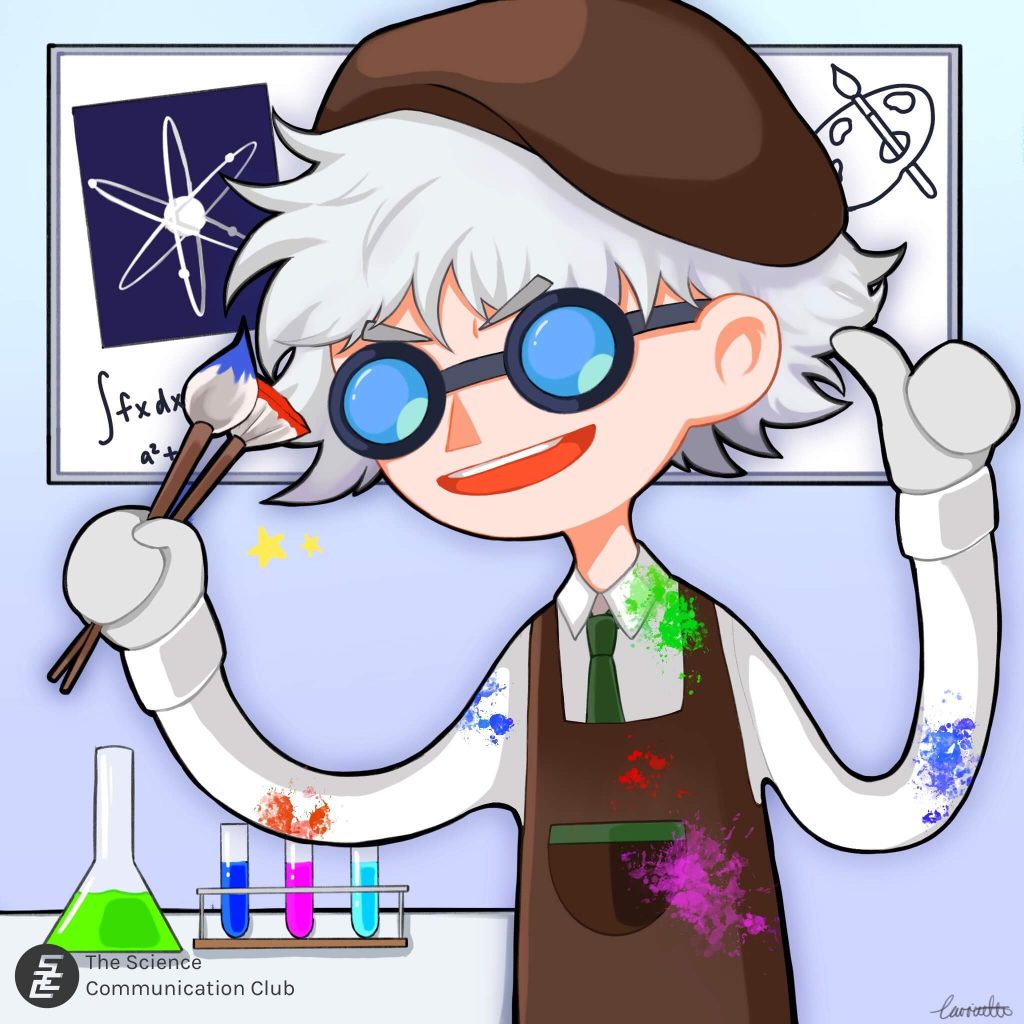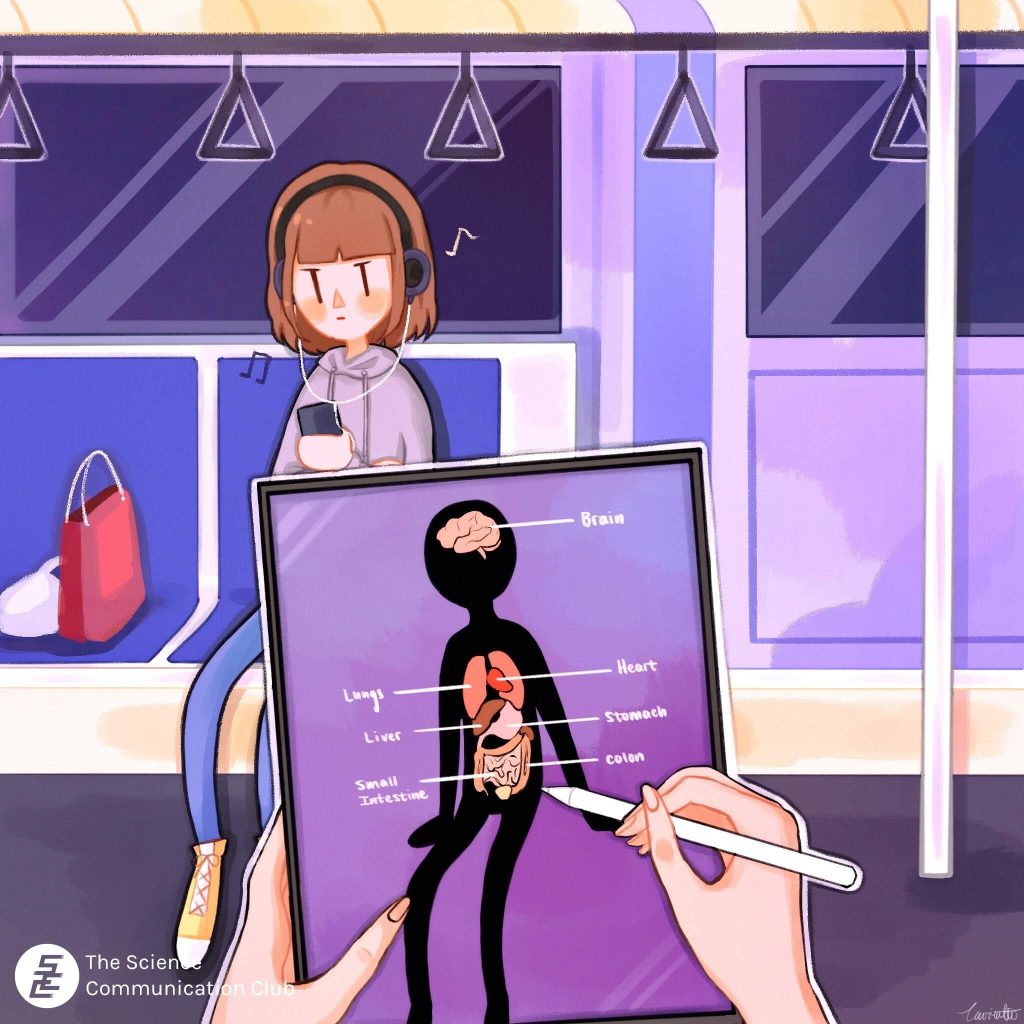
Written by Khaleda Khan
Illustrated by Carrie He
I had the pleasure of interviewing Mona Li, a full-time freelance medical illustrator and visual designer. She specializes mostly in human health and anatomy. This interview shows how scientific illustrations play a crucial role in communicating science to a broad and diverse audience in visual, artsy ways.
Science Communication Club: How did you get into the field of scientific illustration?
Mona Li: When I was in high school, I went to a visual arts program, but I never thought of it as a career path. My art teacher mentioned the Biomedical Communications (BMC) program at U of T, and basically said, “If you’re good at science, then you’re doing art.” He showed us an image that an alumnus from our high school went on to produce, and that sort of planted the seed for my career.
I went on to do my undergrad in psychology, and I realized I was interested in health psychology. During my undergrad, I would do videography and graphic design for different clubs. I met these YouTubers once who saw my work, and they encouraged me a lot – that’s when I realized that I did want to do something art related. When I was studying health psychology, I found that I felt driven in applying information and data in the real world. I wanted to help people and improve services overall.
SCC: What is the largest component of your creative process when you’re sketching or illustrating?
ML: It depends on the nature of the project. It could be, for example, a pure illustration versus an interactive design project. In the beginning, I always want to talk to the client and define the top communication goals and get on the same page about what the purpose is and what they want to accomplish with the piece.
SCC: What constitutes your research process?
ML: The first step is always to define the goal, so you know what the outcome you want is. It’s important to try to get up to speed on what you’re going to be given when communicating with the client. If it’s a surgical illustration, for example, you’d want to read up about the relevant anatomy of the area that’s being operated on and learn other details so you’re ready to speak the same vocabulary.
When you go into the medical illustration program, there is intensive training in life sciences so you can become a subject expert and adapt when researching for your project. You’ll face a lot of different specialties when your clients are coming to you with a proposal. They’re professionals and you have to be on the same level to understand what it is you’re going to be doing. For references, you’d also want to look for a mixture of written and visual references. It usually just comes down to cross-referencing multiple sources.
SCC: How do medical and scientific illustrations communicate science in comparison to scientific journals and articles?
ML: Visual media has the advantage of potentially being able to cross certain boundaries in culture or language. We still work with text a lot, for infographic type designs or patient education comics for pamphlets or treatment programs, and so on.
Another advantage is that by using illustrated characters, for instance, and visual symbolism, you can communicate emotion or other abstract concepts that break the cultural or language barriers.

SCC: How do you think technology intersects with the field of scientific illustration?
ML: I had little exposure to digital art until I went into the BMC program. Whenever I’m doing medical illustration, I use Photoshop or something similar. Technology is always evolving, and so does the education curriculum to equip you with the ability to pick up new tools; [technology] helps broaden our horizons and reach more people, whether it’s in the production or dissemination process.
As medical communicators, we’re in a position to take a critical look at how diversity of people is portrayed in our visuals. There is a lack of representation in patient education materials, like for example, representing how skin conditions look on different skin tones.
It’s easy to dismiss that information as not being relevant to you, so it’s important that medical information is being properly communicated so that doctors and practitioners know to provide care to people with diverse bodies.
SCC: How do you think that the field of scientific illustrators bridges the age-old “arts or science” debate?
ML: I think that basic science (science for the sake of science) and fine art (art for the sake of art) are not so different in their pursuits. Applied art and applied science are also not so different, if at all (think design and engineering). I think it’s fair to say that science communication is both. In order for the public to benefit from the fruit of science, someone has to translate it into a usable format.
It’s hard to imagine how science could continue to exist in society without art. Visual art can and does play a crucial role in science education, outreach and in bridging communication gaps between expert specialists, making interdisciplinary research possible.
SCC: How has working in this field shaped your perspective on the two disciplines?
ML: I definitely appreciate science communication – how it integrates the two disciplines – a lot more than before. Back when I was a psychology student, I’d come across my fair share of pop science literature that I felt was misleading or problematic. That feeling eventually led me to this field. Turns out, there’s been bad, potentially harmful medical art in recent history too. But I am also aware of today’s skilled medical illustrators who are doing important, high-quality work that improves lives, and I understand the kind of labor that goes into that. The onus is on us to practice and champion science communication that’s ethical, informed and doesn’t harm the people that science is supposed to serve.
SCC: Do you have any advice for people wanting to improve their skills in science communication, or people who are going in this field?
ML: Consume science communication and practice it, but also listen to the people you want to communicate with. Whoever the real people are that you want to reach – patients, students, clinicians, researchers, your neighbours – talk to them, listen to their stories and concerns, spend time in their communities. Sometimes you have to advocate for them to justify your decisions. In the end, your message can only be successful if you know your audience.